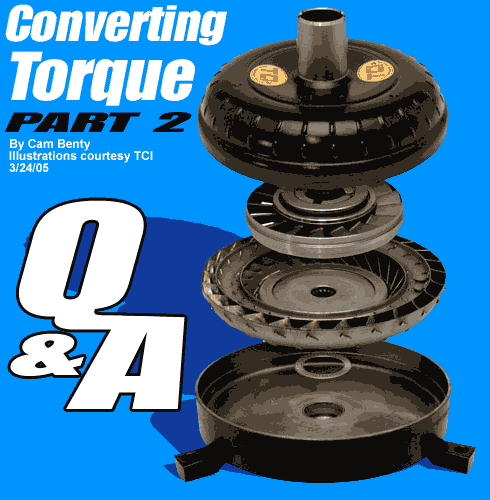| 
(click here to read PART 1)
IS AN ADDITIONAL OIL COOLER REQUIRED WITH HIGH PERFORMANCE
CONVERTERS?
We suggest having a transmission oil cooler installed when
using any high performance converters. Care should always
be exercised when stall test are performed on transbrake
applications is made at the starting line. Any excess time
at stall on transbrake, puts the converter at risk due to
heat build up. This type of heat buildup would not be saved
with a cooler due to the time involved to get rid of the
heat.
If a vehicle is to be used in towing, an added cooler is
a must. The better the converter is designed, the more efficient
it will be and the lower the amount of heat that is generated.
In any situation, an added cooler will only promote longevity,
as “heat” is a transmission's worst enemy.
DOES STALL SPEED AFFECT NORMAL STREET DRIVING?
Normal driving is affected by any stall speed changes. A
car will begin to roll at a higher engine rpm when a higher
stall speed converter is used. The higher the stall
speed
converter, the higher the rpm has to be to start the
car in motion. This doesn’t mean that it takes 3000
rpms to move a car with a 3000-stall speed converter, but
it will raise the normal take off rpms exponentially. Acceleration
rate of the vehicle is faster because the engine’s
torque capacity is reached with less load on the engine. “Stall
Speed” changes the multiplication factor of the horsepower
the rear wheels actually see. In other words, the torque
converter actually fools the car into thinking it has more
torque than it actually does. How does it do this? By changing
in the torque multiplication factor, i.e. a stock converter
with 14-1600 RPM Stall might have a torque multiplication
factor of 1.876 to 1. Adding a 2000 rpm stall speed will
change this to 2.00+ to 1 or there about.
|

